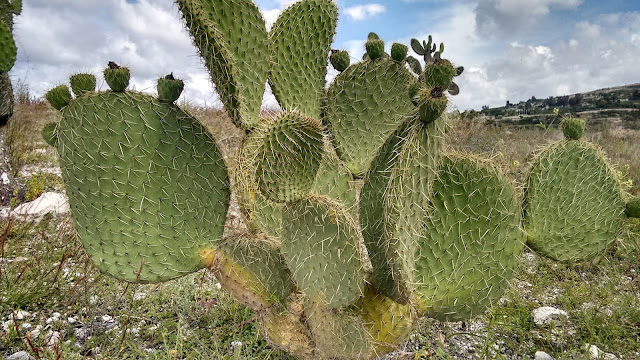"EL MUNDO CAMIBA CON TU EJEMPLO NO CON TU OPINION."
"THE WORLD CHANGES WITH YOUR EXAMPLE, NOT WITH YOUR OPINION."
- Street art found near Casa del Cacique in Yanhuitlan
 On Thursday we spent time in the region of Yanhuitlan, about an
hour’s drive from Oaxaca de Juarez. We were able to receive a guided tour from
Ron Spores, who is leading an excavation in two sites in Yanhuitlan, one, Casa
del Cacique, a 16th century indigenous noble’s home with a wealth of
history, and another, the site of the biggest known city in the world at the time of the conquest in 1521.
On Thursday we spent time in the region of Yanhuitlan, about an
hour’s drive from Oaxaca de Juarez. We were able to receive a guided tour from
Ron Spores, who is leading an excavation in two sites in Yanhuitlan, one, Casa
del Cacique, a 16th century indigenous noble’s home with a wealth of
history, and another, the site of the biggest known city in the world at the time of the conquest in 1521.Casa de Cacique was the home of the indigenous lord of Yanhuitlan, which also served as the site of the town council meetings, with nine patios. The Spanish institution of the cahildo allowed for indigenous self-rule, with meetings that occurred in the native languages and were also recorded in those languages. Funding on this project was recently lost, and Ron Spores (center) explained that we wish to see this funding restored so that renovation can continue on this fascinating site.
Photo credit: Robert Haskett
After our tour of Casa de Cacique, we explored an archeological
site in the outskirts of Yanhuitlan, which according to survey may have been
the largest city in the world at the time of conquest in 1521. The land has
been surveyed but not excavated, and we were fortunate enough to have the
ability to explore the area and find remnants of the great city with our own
hands. I was overjoyed to be able to excavate and play archeologist for the
day, as archeology was my dream job at the ripe age of eight!
A description of our exploration from fellow NEH Scholar Geoff
Agnor:
“For most of his life, Gustavo has collected
pottery and other important objects around his home in Coixtlahuaca, in the
Mixteca Alta region of the north Oaxacan valley, which was historically
inhabited by Chocho, Mixtec, and Nahuatl speakers. We found abundant shards of
red on cream pottery and obsidian blades in the hills above Gustavo's house-
archaeological evidence of a Mexica (Aztec) presence before Spanish conquest.
Here Gustavo is seated in a room that serves as a pulqueria, living room,
museum, and temple (out of frame; a rifle and hacksaw mounted on one wall and
an elaborate Catholic altar at the far end of the room).”

 Below, a few of my own excavations and a view of the cacti and
landscape of the excavation site, such as the tripod leg of a pot that I found at the site (right).
Below, a few of my own excavations and a view of the cacti and
landscape of the excavation site, such as the tripod leg of a pot that I found at the site (right).That same day, we visited the ex-monastery Santo Domingo in Yanhuitlan. The monastery and house of worship was beautiful and extremely ornate. Below, the "mirador" or view of the pueblo of Yanhuitlan from the monastery.
 Pictured below is a skeleton that is used in the local "Semana Santa" processions, as well as the "Dandy Jesus", illustrated wearing bloomers from the 16th century Spanish conquest. Also pictured below are original manuscripts or codices found in the monastery's museum.
Pictured below is a skeleton that is used in the local "Semana Santa" processions, as well as the "Dandy Jesus", illustrated wearing bloomers from the 16th century Spanish conquest. Also pictured below are original manuscripts or codices found in the monastery's museum.And last but certainly not least, a photo of my friend Max that lives in the hacienda with me in Oaxaca for the month. ¡Qué guapo eres, Max!














No comments:
Post a Comment